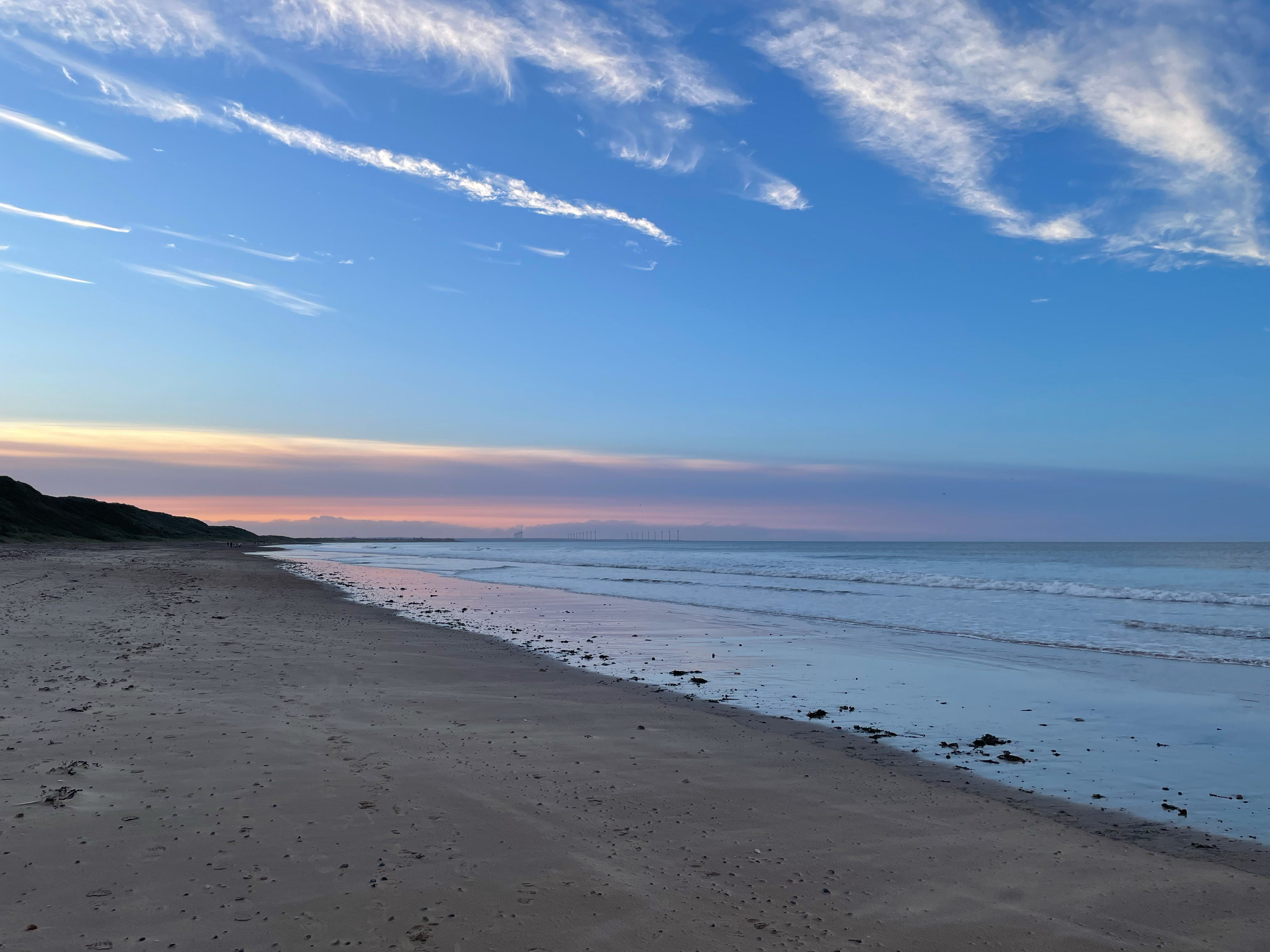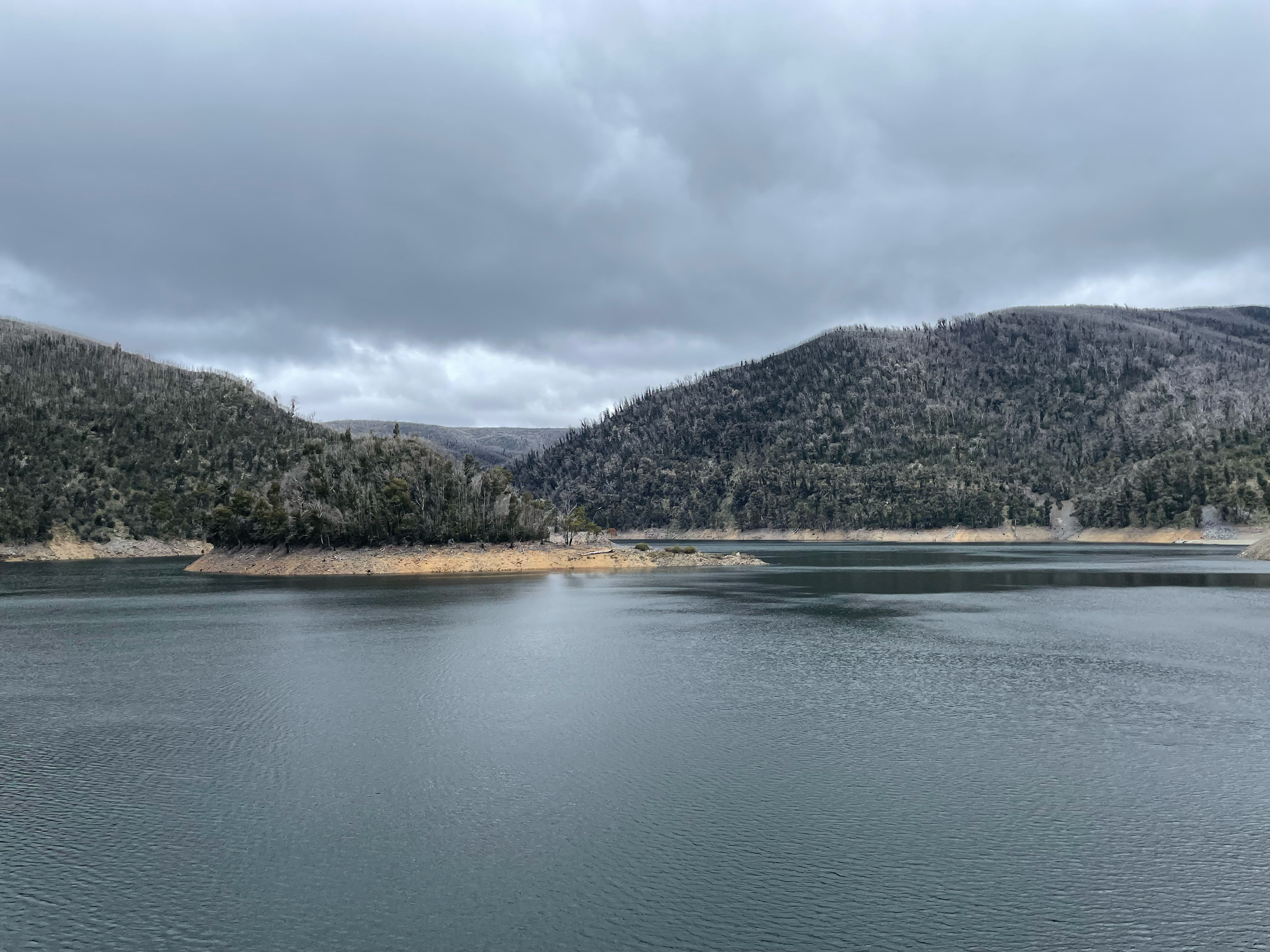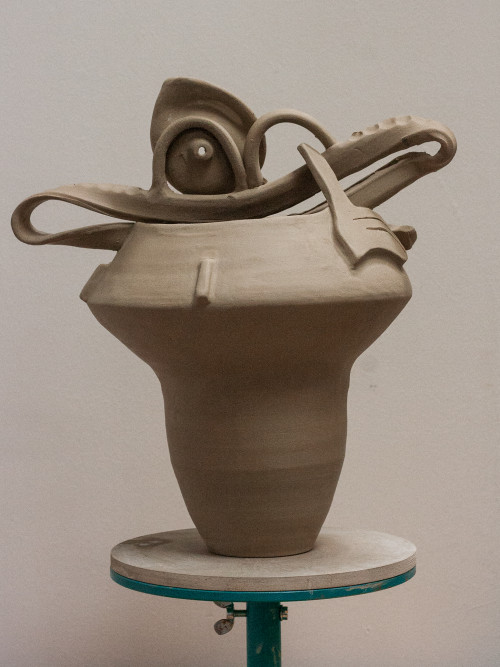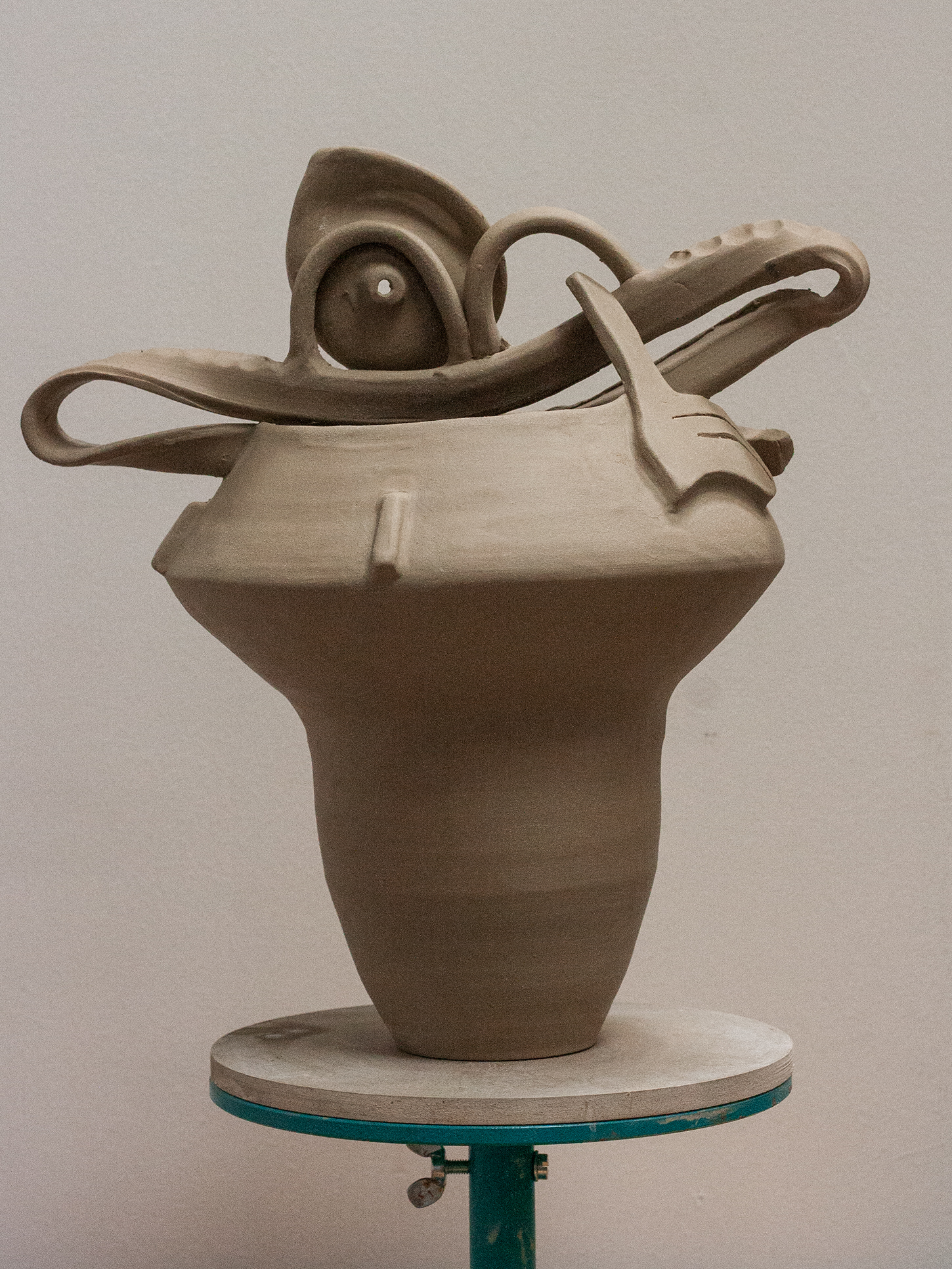
In this writing I refer to genocide, war, Transatlantic Slavery, anti-Blackness and racism.
The earliest parts of the residency involved me spending a significant amount of time in Middlesbrough and Middlesbrough Institute of Modern Art (MIMA) engaging in a range of activities which I consider – separately and collectively – to be forms of listening. As the residency went on, this listening continued at various sites, including the traditional lands of the Wurundjeri peoples, the traditional lands of the Wiradjuri peoples, Glasgow and the west coast of Scotland. Water and memory and time travel and knowing.
James Cook of North Yorkshire played a key role in the ‘discovering’ of the lands we commonly refer to as Australia, in 1768. This expedition would precede the colonising of these lands and the resulting genocide of Aboriginal peoples and Torres Strait Islanders, who in 2023 constituted less than 4% of the population. In North Yorkshire and Cleveland, pubs, museums, streets, houses and a hospital are named after Cook. In fact, the very building which houses MIMA and Teesside University’s School of Arts and Creative Industries’ wood and metal workshops is called the Cook Building. In 1993, Middlesbrough Borough Council unveiled a monumental sculpture which romantically laments the letters which Cook wrote on his ‘travels’. Local steel workers were employed to fabricate the public artwork, which sits outside of MIMA’s building.
Glasgow is a city with decadent sandstone buildings, and grand facades are a mainstay in its architecture. My studio is located in an area of Glasgow that neighbours an area called the Merchant City. From the 1750s, this part of the city was home to tobacco merchants who stayed here in their – still present – mansions, making their money from enslaved Africans’ labour. In primary school, our class was presented with colouring-in sheets of Tobacco Lords. This would have been in the early 2000s. Colour the hat black, robe red and leave the shirt white. Again, through name familiarity, street names (for example Buchanan Street, or where, only in name, Jamaica Street transforms into Union Street) and statues re-present a ‘what has happened’.
The above is not a new concept to me; we’ve been critically engaging. However, what has come through this residency period, of research and making, is the loudness of what is felt.
While I was in Wiradjuri country, two events took place:
– the Australian Indigenous Voice referendum, with voting taking place on 14 October 2023
– the Israeli invasion of Gaza in the occupied territories of Palestine, with bombing commencing on 7 October 2023 followed by ground operations commencing on 13 October 2023
Distinct events, centring on different geological positions, plotted points on various temporal curves/lines.
[?]
THE TRICKSTER, THE PROTECTOR and THE FRIEND emerge as counter-narrators in their spirit; entities which slickly navigate this-wise and other-wise.
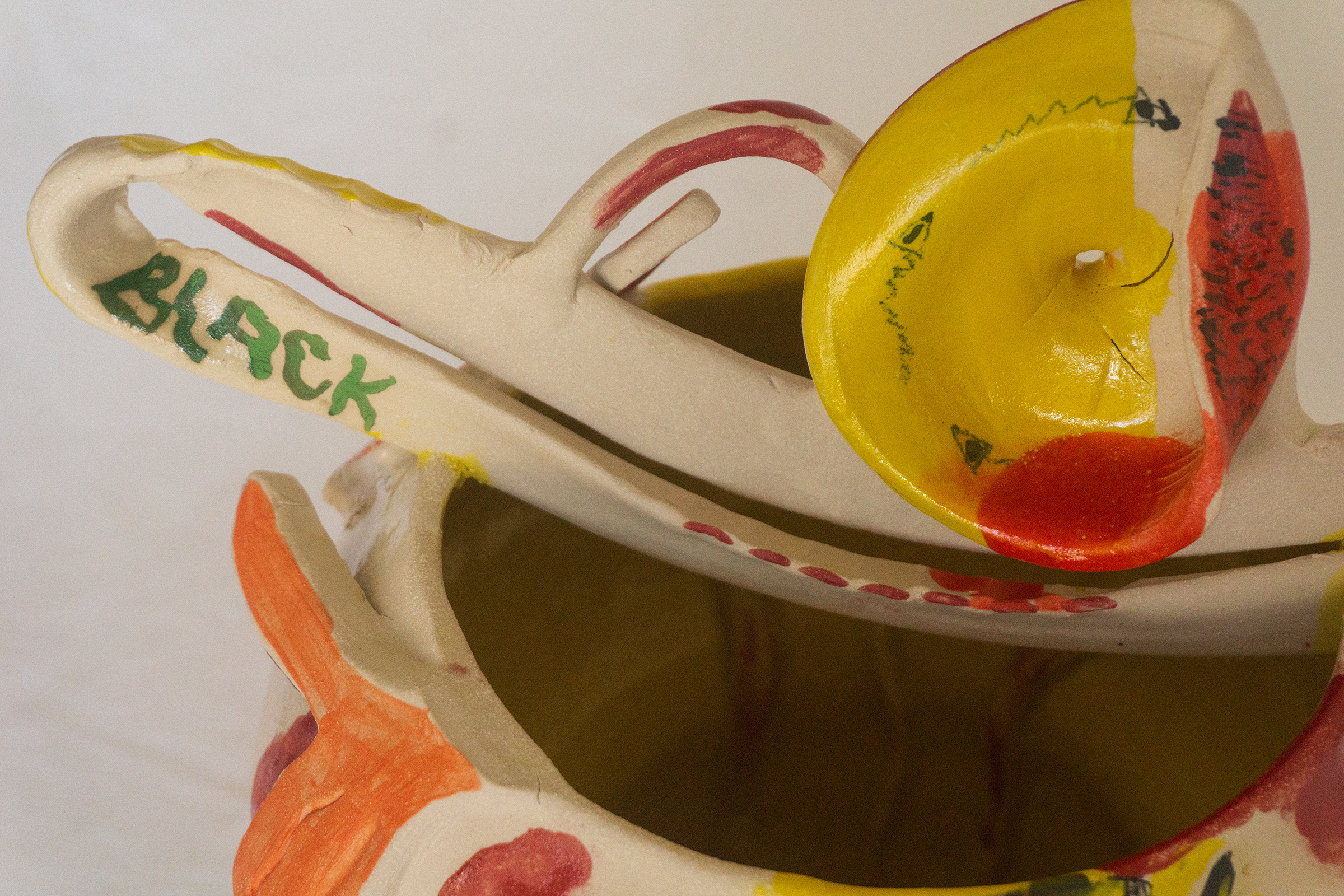
Decolonial practice must work against anti-Blackness. In these institutional, colonial establishments, being Black is felt in a particular key. I also witness a legibility lent to my lightness; the proximity to whiteness is afforded a systemic legibility. How will I corrupt this?
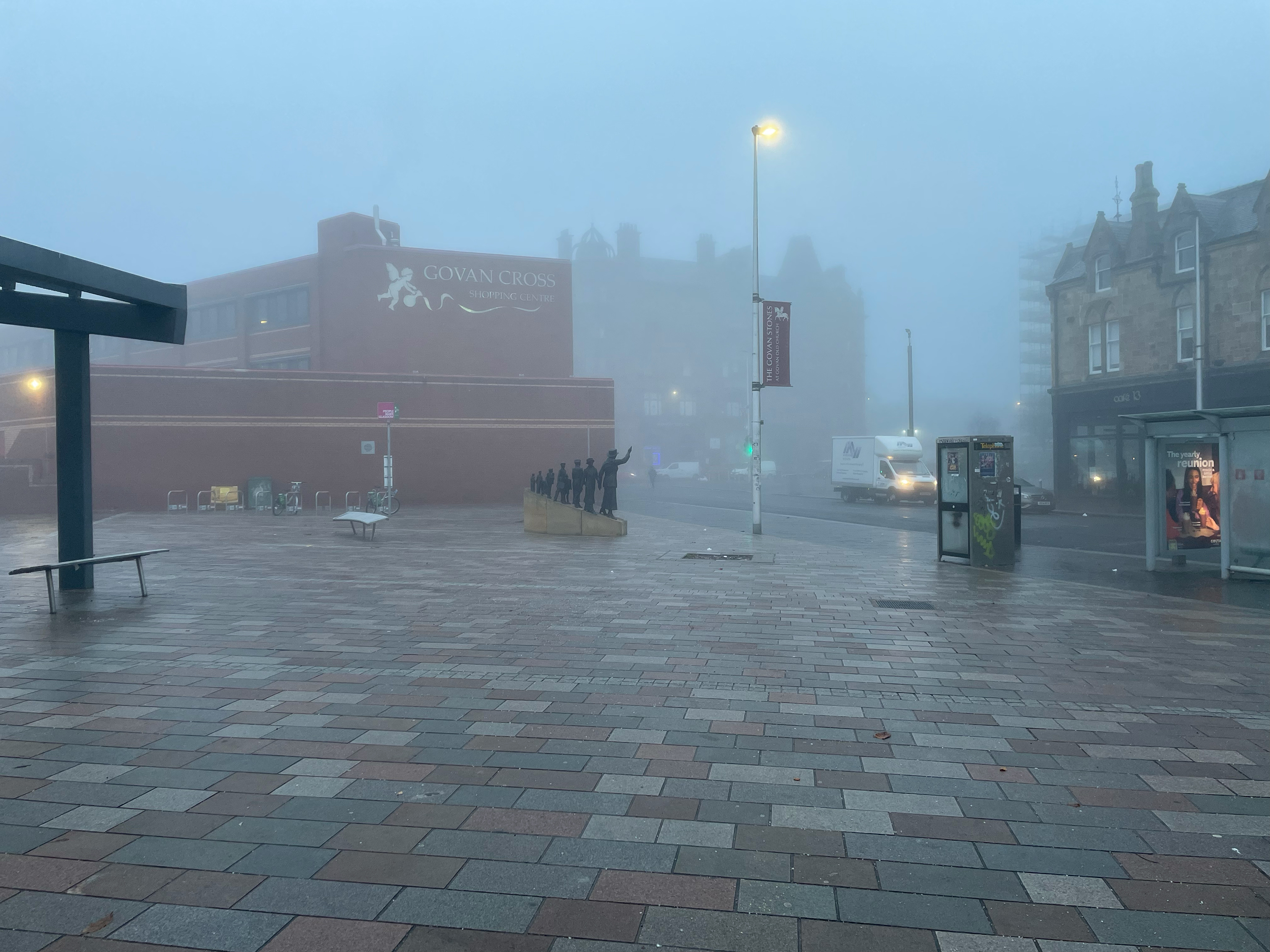
Artist, writer and educator Adjoa Armah speaks to smuggling with the character of forcefulness and, for me, this becomes a useful thought device. Blackness – especially – in this context, cannot be uncoupled from smuggling. Through the colonial lens, our personhood and corporeality were to be transformed to objects, to be held in hold, goods to be triangulated across the Atlantic. The embodied memory of smuggle remains; how it actually feels to move in these spaces (institutional programme, space, this island) as a Black person, an illicit presence. Then there’s what the smuggled smuggle. What can I illicit, can I by force, into this space. Then there’s a knowing that the illicit presence is only one register, and a register organised and managed with specific colonial intentions.
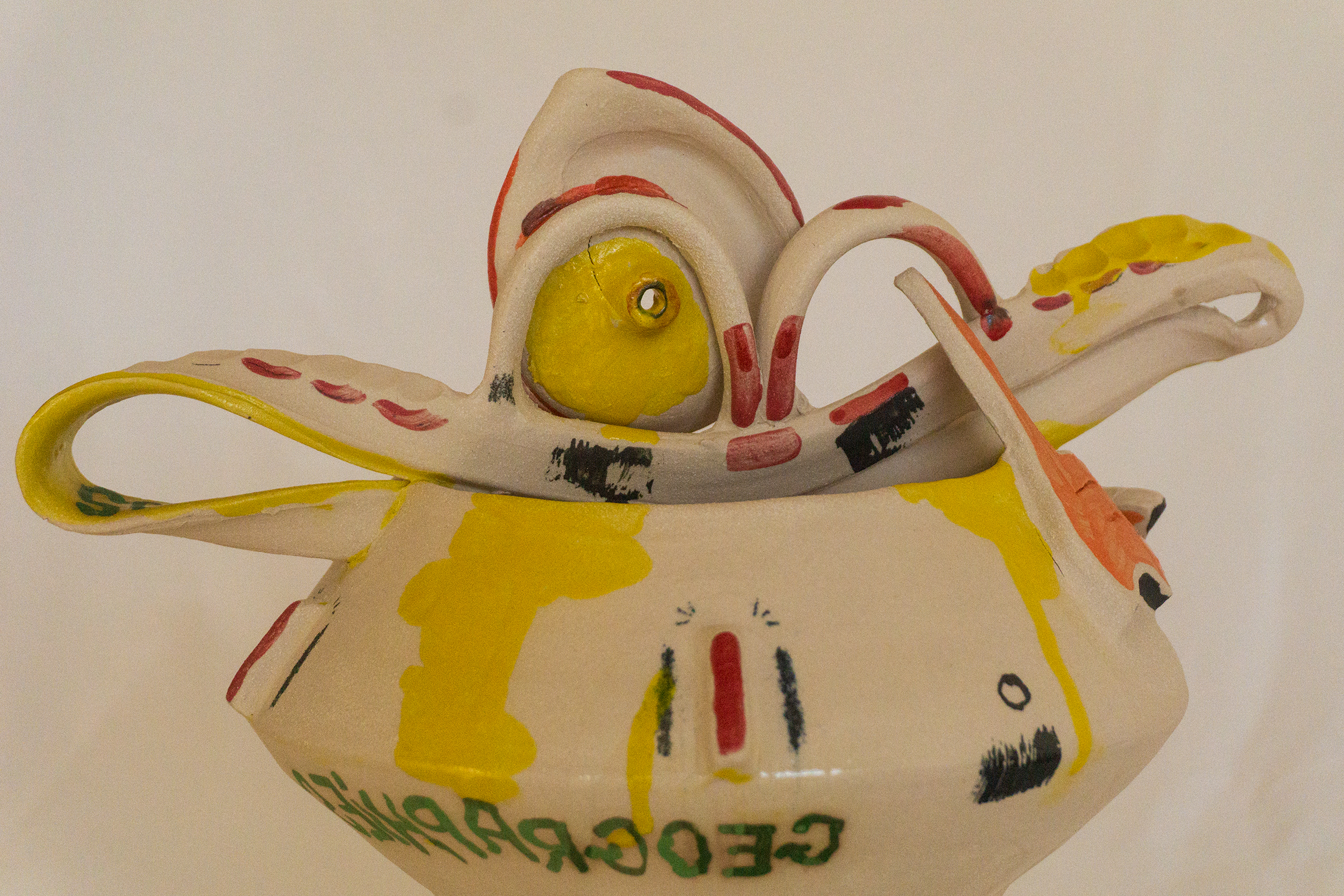
In Glasgow – and this may be across Scotland too – the word ‘how’ often replaces the word ‘why’, while linguistically still holding the meaning of ‘why’. ‘How?’ asks:
– in what way or manner; by what means
– for what reason or purpose
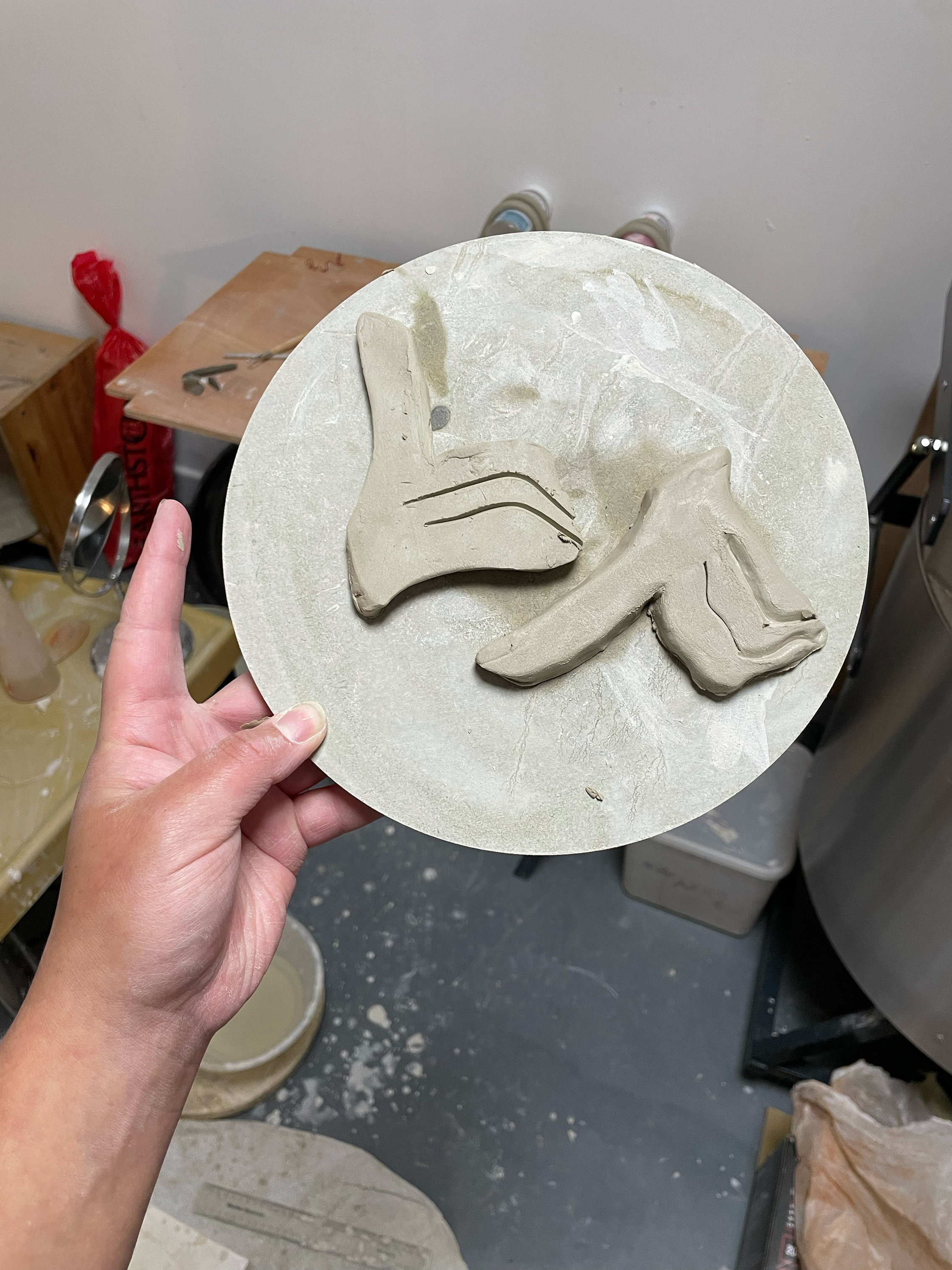
The resource provided by this project, however, has significantly enabled my practice to engage with its foundational fluidity. It has provided me with the trio of time, cash and space which I’ve then been able to use in ways that speak specifically to my processes and ethics. Other types of resources have been gifted to me, shared by or forged with my Black and POC co-conspirators, peers and guides over many years. Having agency over my production budget allowed me to effectively feed back into that ecology.
Throughout the 20/20 project were Network Meetings, constituted by the Decolonising Arts Institute team, host collection representatives and the commissioned artists. These were agenda meetings which tended to start with an update from present artists, followed by responses (from the institutions and artists) to pre-provided material. The ‘Performance as Artist’ is already being considered, the artists are most likely freelancers and the institutions commission arts programmes (i.e. provide work). The added dynamic of the institutional representatives being overwhelmingly white and all artists being Black or People of Colour is both illustrative and impactful. A feedback loop [?]

Partner Reflection
Middlesbrough Institute of Modern Art (MIMA)
Helen Welford, Exhibitions and Collections Curator
Elinor Morgan, Artistic Director
October 2024
Reflective Work
Working as part of the 20/20 project has influenced our research and practice at all levels. Through a deep engagement with 20/20 and an enhanced understanding of decolonising, we have taken our existing commitment to anti-racism further, moving beyond approaches that diversify our programme and collection, to processes that address our institution’s colonial frameworks and mindsets. As an institution with a majority white staff, within a network of 20 similar institutions, all employing racially diverse and minoritised artists, we were cognisant from the outset of our responsibility to make change, rather than place – even inadvertently – a burden of responsibility on our artist collaborator.
The framing of partner meetings around provocations from Doing the Work: Embedding Anti-Racism and Decolonisation in Museum Practice (Contemporary Art Society and UAL Decolonising Arts Institute) foregrounded this approach. Meetings offered space for structured, critical reflection for those of us most closely engaging with the project (at MIMA, this was the Curator and Artistic Director). Being invited to revisit this toolkit (we were involved in the original online sessions that it summarises) gave our team the confidence to centre insights and provocations from Doing the Work into teaching, and we have used the text as a stimulus on our Higher Degree Apprenticeship and MA courses, working with around 60 curators based across England.
Strategic Work
We positioned the project as one of our strategic priorities, and therefore reported on progress through quarterly Director Reports, read by our funders and board, thus raising the need to diversify and decolonise the collection and programme as a regular item for attention and discussion. Our reflections on collecting practices and acquisition strategies guided a comprehensive review of our Collection Development Plan which we shared through a critical discussion with our external Advisory Group.
This work builds on a partnership with the Decolonising Arts Institute and the Black Artists and Modernism project, dating back to 2018, through which we audited the Middlesbrough Collection held at MIMA. As a result of this, we set targets for the display and acquisition of ethnically diverse and minoritised artists, which we report on each quarter to our funders and board. Alongside the 20/20 partnership and a further partnership with the Institute through ‘Towards A National Collection’, we have been researching, publishing and curating on related topics. We are committed to continuing anti-racist and decolonising practices.
Supporting Zoë Tumika’s work
During their 15-month 20/20 residency, Zoë Tumika produced work rooted in the Tees Valley and the Middlesbrough Collection, while engaging with broader international conversations. Beginning with the River Tees as a focal point, they explored Middlesbrough’s changing industry and its ties to colonialism. Their focus has been on making and materials, and the resulting work is an intuitive and embodied response to place, material culture and social histories.
To support Zoë’s connection with the region, we facilitated connections with key people who might offer insights into the Tees Valley. We actively sought to connect Zoë with individuals representing diverse ethnicities in acknowledgement of MIMA’s majority white staff, and the importance for Zoë to connect with people of colour in the formation of their work. Zoë made use of technical facilities and expertise through the School of Arts & Creative Industries at Teesside University, where they tested and trialled new techniques with metal which they intend to deploy in future works.
Now in the latter stages of the commission, we are working with Zoë to plan the display of three ceramic works, a sound piece and a text at MIMA. We will present their work in our Open Access Collection Space, which holds the entire ceramics collection. We arrived at this display collaboratively as we, Helen and Zoë, want to offer visitors an unexpected encounter with Zoë’s work and a new experience of the existing collection.
A recurring theme in Zoë’s work is the disruption of long-standing institutional structures and norms. As with every deep collaboration with an artist, we have valued the opportunity build a relationship with Zoë and their work. We have learnt from their practice and approach. This residency has encouraged us to re-evaluate how we share institutional processes, such as accessioning, with artists to reach greater transparency.
